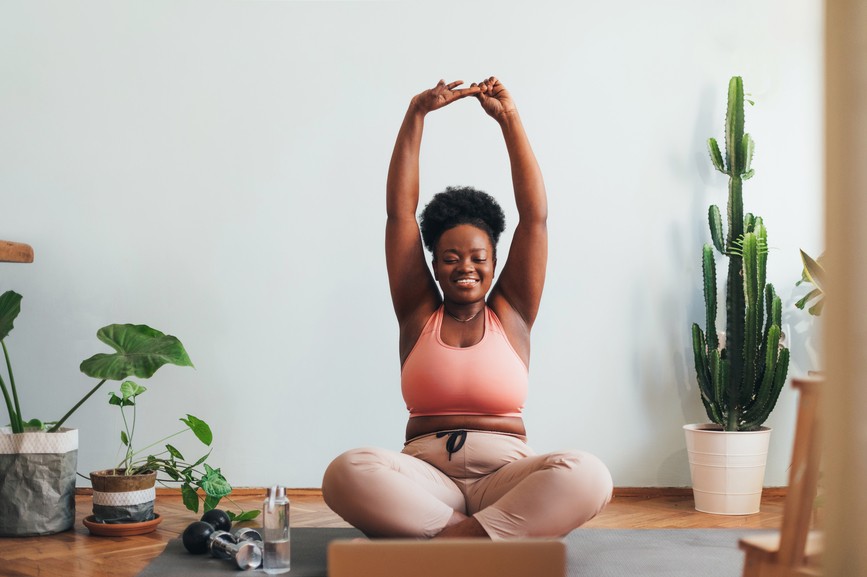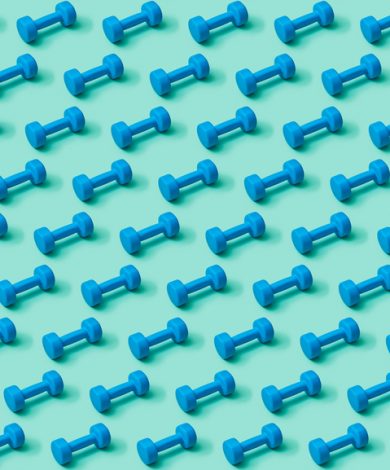Arriving in the “postpartum period” is like being a tourist in a foreign city where…
Movement
3 Simple Postpartum Exercises to Help Your Body Rebalance After Birth and Pregnancy
June 14, 2021 • By Heidi Weiss

Pregnancy challenges your body to the absolute limit.
In fact, a study at Duke University showed that pregnant people were “endurance specialists, living at nearly the limit of what the human body can cope with.” That means pregnancy puts the same physical demands on the body as athletes training for triathlons and ultra-marathons.
Here’s the interesting part.
After running a marathon, we are encouraged to allow our bodies to fully recover, to be proactive about rehabilitation. Resting. Moving gently. Yet, with pregnancy, we are expected to look and act like it never happened. “Get back to our old life ASAP!”
Even after…
Your abdominal muscles stretch and weaken to make space for your growing baby. Your breasts change to prepare for lactation. You gain weight from increased blood volume, a new organ (the placenta), another human, and your body storing more fat to support your pregnant hormone balance.
There are also the astounding hormone fluctuations. So, of course, our bodies feel foreign. There is so much going on that is completely out of our control. Which is annoying as much as it is part of the deal.
In my years working as a certified Pilates instructor, combined with my own experiences as a mother of two, I want to share what I have found to be the most useful exercises postpartum. Remember, we are recovering from an ultramarathon (pregnancy) and then immediately adding a 100-mile bike ride (childbirth).
This means as you start moving your body, you are rehabilitating. And that requires a lot more than rest, Epsom salt baths, and a foot massage. We need to honor what your amazing body has done, been through, and where you’re at right now.
So we start small. It may feel unsatisfying but stick with me. Let’s explore this new body that feels like it’s been hit by a truck, and rebuild the foundation. Here are my top go-to postpartum exercises to start putting the pieces together again.
BREATHE!
Are you shocked this is where I’m starting? I know. I know. Everyone is telling you to breathe, but there is a reason. Which you can read about here.
Breathing in this way (fully utilizing the diaphragm and honoring its relationship to the pelvic floor) helps coordinate all of the muscles of your core AND it helps regulate your nervous system. Meaning, breathing can help you calm down when the raging hormones take over.
This exercise is also especially helpful if you have diastasis recti, or “The Gap” as discussed in this article. The backside of the body is associated with receptive, grounding, feminine, yin energy, which can often be forgotten in the hustle and bustle of caring for a baby and family.
The Exercise
STEP 1: Lie on your back with your knees bent and feet flat. Feel your spine LONG on the floor. Lying on the floor is supportive and grounding. AND this unloads the abdominals and pelvic floor which is a welcome break for these muscles!
STEP 2: Bring your hands to the front of your pelvis. Take a deep breath into your hands. Feel your belly rise under your hands and fill up as much as you can.
STEP 3: Exhale and feel your muscles pull away from your hands and down toward the earth. This ensures that the muscles are engaging.
Not sure you’re doing it right? Open your mouth and make a sound “sshhhh,” “sssss,” or “hhaaaaa” as you exhale.
LISTEN
Tuning into your sense of hearing helps calm the nervous system. Cool, right? It also helps stretch your neck and realign your upper body which starts to hunch forward after long hours of holding, feeding, and staring at your baby. You can do this seated or standing. Do it in the shower! During a feeding! While pretending you are busy so you don’t have to walk the dog!
STEP 1: Close your eyes (cutting off one sense helps heighten others) and imagine a beautiful sound behind you. Maybe the sound of the door closing as your spouse takes the baby and dog on a walk leaving you with some time for yourself. Something like that.
STEP 2: Rotate your head to one side listening with that ear. Listen now with your other ear to rotate the other direction.
STEP 3: Continue alternating with awareness in one ear at a time and then keep rotating and listen to that beautiful sound with both ears.
Letting your sense of hearing guide your movement, you may be surprised to find new space and range of motion in your body.
MOVE
Because pregnancy puts extra weight on the front of the body, the lower back gets really tight during pregnancy. Your lower back has literally not moved in months! In this exercise, you will also connect with our grounding yin energy by lying on your back to rebalance the front of the body.
An important part of putting the pieces together again is mobilizing this area of your spine and reconnecting the relationship of stability and mobility. By moving through your spine, which again, hasn’t moved in months, you’re creating space for your abdominals to come home to, your breath to fill, and realign your body.
Lying flat on the floor with knees bent and feet flat allows us to safely begin to rebalance everything. We also get to utilize the support and feedback from the ground.
STEP 1: Lie on your back with your knees bent and feet flat. Feel your spine LONG on the floor. Lying on the floor is supportive and grounding. AND this unloads the abdominals and pelvic floor which is a welcome break for these muscles! This is the same setup as the breathing above so feel free to put these together!
STEP 2: Press your lower back heavier into the floor. Notice how this lengthens your lower back and tips your tailbone up toward the ceiling.
STEP 3: Exhale as you do this and feel the muscles underneath your hands pulling down toward the floor and your spine.
STEP 4: Come back to your starting position.
STEP 5: Then, press your tailbone more firmly into the ground and notice how your pelvis tips the other direction. Your lower back will come away from the floor. Explore the contrast between these two positions. Exhaling as you press your lower back into the ground.
Remember that movement is a journey, not a destination. Explore and enjoy the sensations, instead of focusing on “doing it right.”
As you know, there are a lot of new demands on your body while caring for a baby. It’s like after the marathon of pregnancy, the 100-mile bike ride of childbirth, only to find ourselves at the starting line for the triathlon of motherhood. And we begin this motherhood adventure at a deficit.
It is the difference between passing out and giving into the lack of nutrients left in your body, dehydration, and exhaustion OR slowly, piece by piece, rebuilding your foundation. Your foundation of stability, mobility, strength, nutrition, rest, and full spectrum health.
This way you begin the triathlon of motherhood ready to crawl around on the floor with your baby and then catch them when they fall off the windowsill after climbing up when you weren’t looking. That happens to everyone, right?
More ways to use to mindful movement to connect to your postpartum here and if you’re looking to own the sh*t out of your mom bod, click here.
Source: https://today.duke.edu/2019/06/there-limit-human-endurance-science-says-yes



